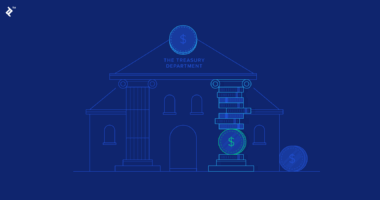The Battle of Crypto Exchanges
Understanding the Competitive Landscape
The cryptocurrency market has grown exponentially, giving rise to fierce competition among exchanges. Coinbase, a pioneer in the U.S. market, faces stiff competition from global players like Binance, Kraken, and Huobi. Each platform offers unique features, but how does Coinbase compare in terms of security, trading volume, fees, and user experience?
Why Coinbase Stands Out
Coinbase is renowned for its user-friendly interface and robust security measures. However, it faces challenges such as higher fees and limited global reach compared to its rivals. This article explores Coinbase’s strengths and weaknesses in the context of its competitors.
Coinbase vs. Binance: Volume and Asset Diversity
Trading Volume Comparison
Binance dominates the market with trading volumes exceeding $757 billion monthly, while Coinbase lags behind with $89 billion in Q4 2024. This disparity highlights Binance’s global reach and appeal to high-frequency traders.
Asset Listings
Binance supports over 358 cryptocurrencies, offering unmatched diversity. In contrast, Coinbase lists 246 assets with 404 trading pairs, focusing on quality over quantity. This makes Coinbase ideal for beginners but less versatile for advanced traders.
Coinbase vs. Kraken: Fees and Advanced Features
Fee Structures
Kraken offers some of the lowest fees in the industry, making it attractive for cost-conscious traders. In contrast, Coinbase charges relatively high transaction fees, which can deter frequent users.
Advanced Trading Options
Kraken excels with margin and futures trading at competitive rates. While Coinbase briefly introduced margin trading in 2020, it discontinued the feature due to regulatory challenges. This makes Kraken a better choice for advanced traders.
Security: A Key Differentiator for Coinbase
Robust Security Measures
Coinbase is considered one of the safest platforms due to its extensive use of offline cold storage and insurance coverage for digital assets. These features make it a trusted choice for institutional investors.
How Rivals Compare
While Kraken and Binance also prioritize security with cold storage and multi-factor authentication, they lack the same level of insurance coverage that Coinbase offers. This gives Coinbase an edge in attracting risk-averse users.
Global Reach: Accessibility Matters
Coinbase’s Limited Reach
Coinbase operates in over 100 countries but primarily caters to U.S.-based users. Its limited fiat currency support (USD, GBP, EUR) restricts global accessibility.
Kraken and Binance’s Wider Accessibility
Kraken supports seven fiat currencies and operates in 190 countries, while Binance’s global presence is bolstered by its extensive crypto-to-crypto trading pairs. This makes them more appealing to international traders.
User Experience: Simplicity vs. Complexity
Coinbase’s Beginner-Friendly Interface
Coinbase’s intuitive design and educational resources like “Learn & Earn” make it a favorite among newcomers to crypto trading. Its mobile app is equally efficient, ensuring seamless transactions on the go.
Advanced Features on Rival Platforms
Platforms like Kraken and Binance cater more to experienced traders with complex tools such as futures trading and advanced charting options. However, these features can overwhelm beginners.
Choosing the Right Exchange
Coinbase’s Strengths
Coinbase excels in security, ease of use, and institutional-grade services. It is ideal for beginners and U.S.-based investors seeking a regulated platform.
When to Choose Rivals
For lower fees, advanced trading options, or broader global access, platforms like Kraken or Binance are better suited. Ultimately, the choice depends on individual needs—whether you prioritize security or cost-efficiency.
By understanding these differences, traders can make informed decisions in navigating the ever-evolving world of cryptocurrency exchanges.









